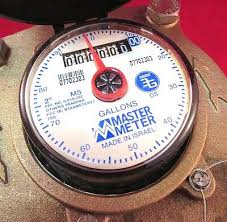Questions About Your Bill
Have questions about your water or sewer charges, past bills, or account updates?
Please contact Customer Service for information about your water or sewer rate or charges, or account updates such as name changes or request for final bills. Call or send an email, whichever is more convenient for you. Have your bill available before speaking to Customer Service.
How are our customers billed?
Customers are billed monthly based on metered water consumption and/or sanitary sewer service. Phase A Sewer Assessments are forwarded to the Defiance County Auditor for collection.
How is your bill calculated?
The District charges a base amount of $55.50 for up to 2,000 gallons for water consumption. Usage above that amount is based on metered water consumption multiplied by the water rate of $18.00 per 1,000 gallons. Sewer charges are a flat rate of $61.00 regardless of the amount discharged by our customers.
How to Read Your Meter
Reading Your Water Meter
Your water meter (usually located inside the home) measures the amount of water used in your household. Learning how to read it can help you verify the monthly reading on your water bill.
How to Read Your Meter
Most water meters use straight-reading dials (pictured above) which are read the same way you read your vehicle odometer. Meters measure water use in cubic feet (one cubic foot equals 7.48 gallons) or gallons. The District calculates water bills based on gallons consumed between readings.

How to Verify Your Monthly Reading
Meters are read about the same day each month using an automatic meter reading system by Sensus. The date the meter was read appears at the top of your bill and is recorded in gallons as “Water Usage.” To verify your monthly reading next month, read your meter on the same day it was read the previous month. Subtract your previous reading from this new reading to obtain your monthly water use.
Using Your Water Meter to Detect Leaks
Your water meter can help you determine whether your water-using fixtures have any leaks.
-
Turn off all faucets and water-consuming appliances, including evaporative coolers and ice-makers in refrigerators.
-
Check the needle’s position on the dial and note the time.
-
Check the needle’s position again after 15-30 minutes. If the needle’s position has changed, you may have a leak.
Some meters have a blue triangle dial on the face, which turns with low flow through the meter and makes it easier to detect when water is moving through the meter. You may hear water moving through the meter or the meter making a noise.
To determine if there is a leak inside the house or between the water meter and the house, turn off your house valve. If the needle on the water meter dial (or the blue triangle) continues to move, you may have a leak between your house and the water meter. If the needle has not moved, you may have a leak within your house. It is a good idea to periodically check for leaks.
The District can help you locate and read your meter. Call the District for more information or send an e-mail to Customer Service.
Automatic Payment Request
